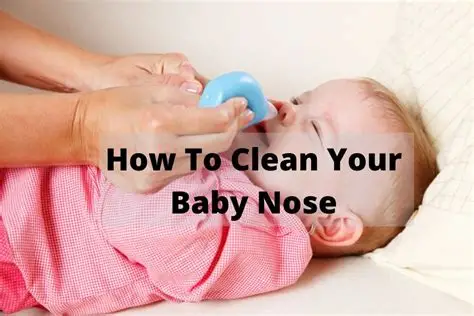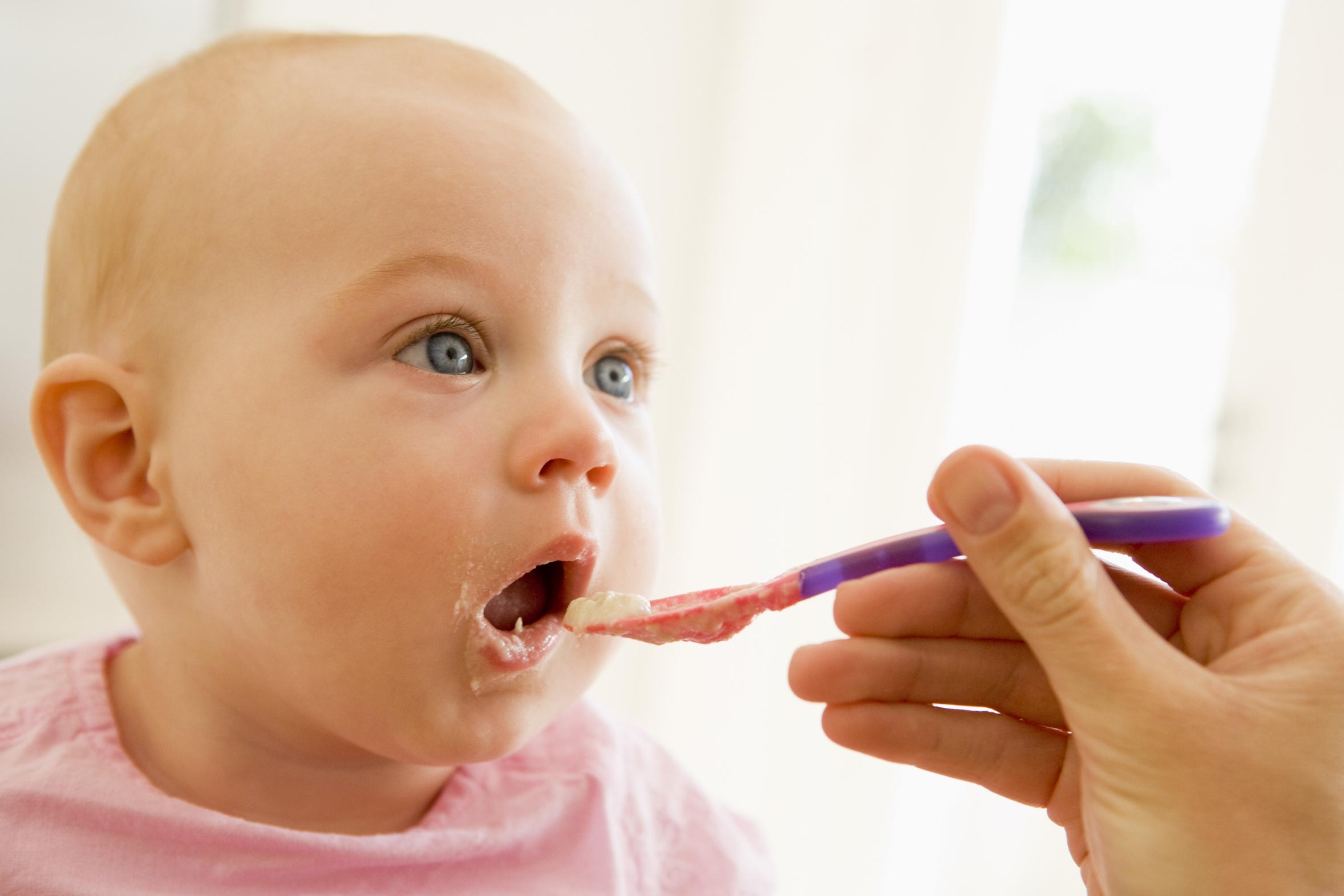When your little one has a stuffy nose, it can be incredibly distressing for both of you. Babies primarily breathe through their noses, especially when feeding, so congestion can make eating, sleeping, and overall comfort a real challenge. Unlike adults, babies can’t simply blow their noses, so it falls to parents to help clear those tiny airways safely and effectively.
Throughout history, parents have used various home remedies to alleviate infant congestion. Modern pediatric recommendations and advancements in baby care tools have refined these methods, focusing on gentle, non-invasive techniques that prioritize the baby’s comfort and safety. Understanding how to properly clean your baby’s nose is an essential part of infant care, ensuring they can breathe easy.
Why a Clean Nose is Crucial for Babies
A clear nasal passage is vital for a baby’s well-being because:
- Breathing: Babies are obligate nasal breathers, meaning they prefer to breathe through their noses. A blocked nose makes breathing difficult.
- Feeding: A stuffy nose can interfere with breastfeeding or bottle-feeding, as babies need to breathe while sucking. This can lead to frustration and inadequate feeding.
- Sleep: Congestion can disrupt a baby’s sleep, leading to fussiness and discomfort.
- Preventing Complications: While most baby colds are mild, persistent congestion can sometimes lead to ear infections or other issues.
When to Clean Your Baby’s Nose
You don’t need to clean your baby’s nose excessively or if it’s already clear. Focus on cleaning when you notice signs of congestion or visible mucus.
- Visible Mucus: If you see dried boogers or wet mucus around the nostrils.
- Noisy Breathing: Sniffling, snorting, or wheezing sounds during breathing, especially during feeding or sleep.
- Difficulty Feeding: Your baby struggles to latch, stops frequently, or seems unusually fussy during feeds due to nasal obstruction.
- Coughing/Sneezing: While these can clear the nose naturally, if accompanied by noticeable congestion, cleaning might help.
- Before Feeds and Sleep: These are often the best times, as a clear nose makes both activities much easier for your baby.
Essential Tools for Safe Nose Cleaning
Gathering the right tools before you start will make the process smoother and less stressful for both you and your baby.
- Saline Nasal Drops or Spray (Baby-Specific): This is often the first and most crucial step. Saline solution (a sterile mixture of salt and water) helps to thin and loosen mucus, making it easier to remove. Always use saline drops/spray specifically formulated for babies.
- Bulb Syringe (Nasal Aspirator): A soft, rubber bulb with a narrow tip used to suction out loosened mucus. These are often given out at hospitals.
- Manual Nasal Aspirator (e.g., NoseFrida, SnotSucker): These aspirators typically involve a tube with a mouthpiece for the parent and a tip for the baby’s nostril, often with a filter to prevent mucus transfer. Many parents find these more effective and hygienic than bulb syringes.
- Soft Tissues or Cotton Swabs/Balls: For gently wiping away mucus from the outside of the nostrils.
- Warm, Damp Cloth: For wiping your baby’s face if needed.
- Humidifier (Optional but Recommended): A cool-mist humidifier in the baby’s room can add moisture to the air, helping to keep mucus thin and prevent dryness, especially in dry climates or during colder months.
How to Clean Your Baby’s Nose Safely: Step-by-Step Methods
Always ensure your hands are clean before touching your baby’s face or nose.
Method 1: Using Saline Drops and a Bulb Syringe
This is a widely recommended and effective method for clearing a stuffy nose.
- Prepare Your Baby:
- Lay your baby on their back on a flat surface (like a changing table) or hold them securely in a slightly reclined position in your lap.
- Gently support their head. It helps if another adult can help hold your baby still, especially if they’re squirmy.
- Administer Saline Drops:
- Place 1-2 drops of saline solution into one nostril. If using a spray, a quick, gentle spray is usually sufficient.
- Wait for about 30 seconds to a minute. This allows the saline to work its magic, softening and loosening the mucus. You might hear gurgling or see mucus start to drip.
- Use the Bulb Syringe:
- Compress the bulb of the syringe before placing it near your baby’s nose. This creates the vacuum needed for suction.
- Gently insert the tip of the bulb syringe just inside (not deep into) the nostril where you applied the saline. Ensure it forms a loose seal.
- Slowly release your grip on the bulb. This will create suction and draw mucus into the syringe.
- Remove the syringe and squeeze the contents into a tissue or sink to empty it.
- Repeat (if needed):
- Wipe the tip of the syringe clean with a tissue.
- Repeat the process for the other nostril.
- You can repeat the entire process (saline + suction) for each nostril once or twice if necessary, but avoid over-suctioning, which can irritate the nasal passages.
Cleaning the Bulb Syringe: After each use, separate the tip (if detachable) and wash all parts thoroughly with warm, soapy water. Squeeze soapy water in and out of the bulb several times, then rinse with clear water until no soap remains. Air dry completely before storing. Some can be sterilized.
Method 2: Using a Manual Nasal Aspirator (e.g., NoseFrida)
Many parents find these aspirators highly effective for stubborn mucus.
- Prepare Your Baby: Same as Method 1: Lay your baby on their back or hold them securely.
- Administer Saline Drops: Apply 1-2 drops of saline solution into each nostril and wait 30 seconds to a minute to loosen mucus.
- Position the Aspirator:
- Place the larger, rounded tip of the nasal aspirator against, but not inside, your baby’s nostril, creating a seal.
- Place the mouthpiece in your mouth.
- Gentle Suction:
- Gently and slowly suck through the mouthpiece. You control the suction strength. The filter will prevent any mucus from reaching your mouth.
- You’ll see mucus collecting in the collection chamber.
- Remove and Clean:
- Remove the aspirator.
- Wipe your baby’s nose with a soft tissue.
- Repeat for the other nostril if necessary.
Cleaning the Manual Nasal Aspirator: Disassemble the aspirator. Most components can be washed with warm, soapy water and air-dried. Replace filters as directed by the manufacturer.
Method 3: Removing Dry Boogers (External Cleaning)
For dry, crusty mucus that’s visible at the entrance of the nostril.
- Moisten the Booger: If the booger is hard and dry, a drop or two of saline solution can help soften it. You can also use a warm, damp washcloth to gently dab around the nostril.
- Gentle Removal:
- Use a damp, soft cotton swab (moisten with water or saline) or a corner of a soft, damp tissue.
- Very gently wipe around the outside of the nostril. Never insert the cotton swab or your finger deep into your baby’s nostril, as this can push the booger further in or irritate the delicate nasal lining.
- Specialized baby nose tweezers with rounded, safe tips are also available for removing visible dry mucus, but use them with extreme caution and never insert them deeply.
Method 4: Environmental Approaches
These methods help prevent and loosen mucus naturally.
- Cool-Mist Humidifier: Place a cool-mist humidifier in your baby’s room, especially during sleep. Ensure it’s cleaned regularly according to manufacturer instructions to prevent mold growth.
- Steamy Bathroom: Run a hot shower in your bathroom to create steam, then sit in the steamy bathroom with your baby for 10-15 minutes. The warm, moist air helps thin mucus.
- Hydration: Ensure your baby is well-hydrated. For infants, this means adequate breast milk or formula. Staying hydrated helps keep mucus thin.
- Elevate Head (Slightly): If your baby is congested, slightly elevating the head of their crib mattress (by placing a towel under the mattress, never directly under the baby’s head) can help with drainage. Always consult your pediatrician before doing this to ensure safety and prevent suffocation risks.
Important Safety Tips and Precautions
- Be Gentle: A baby’s nasal passages are very delicate. Always use gentle movements.
- Avoid Over-Suctioning: Excessive suctioning can irritate or even damage the nasal lining, potentially causing swelling or nosebleeds. Limit suctioning sessions to 1-2 times per day, or as needed before feeds/sleep.
- No Unapproved Products: Never use adult decongestants, vapor rubs, or essential oils on or near your baby’s nose unless specifically instructed by a pediatrician. Many over-the-counter cold medicines are unsafe for infants.
- Cleanliness is Key: Always use clean tools and thoroughly clean them after each use to prevent the spread of germs.
- Patience: Your baby might not enjoy the process. Stay calm, speak soothingly, and take breaks if needed.
- When to Call the Doctor:
- If your baby has difficulty breathing (flaring nostrils, retractions in the chest, bluish lips).
- High fever, especially in infants under 3 months.
- Refusal to feed or signs of dehydration (fewer wet diapers).
- Thick, yellow or green mucus that persists for several days.
- Coughing that worsens or sounds like croup.
- Any concerns about your baby’s overall health or if congestion doesn’t improve with home care.
By following these safe and effective methods, you can help your baby breathe easier and feel more comfortable, ensuring their well-being during those inevitable stuffy nose moments.
FAQ
Q1: How often should I clean my baby’s nose?
You should clean your baby’s nose only when necessary, typically when you see visible mucus, hear noisy breathing, or when congestion affects their feeding or sleep. Avoid over-cleaning, as it can irritate the delicate nasal lining.
Q2: Is homemade saline solution safe for babies?
While recipes for homemade saline exist, it’s generally recommended to use commercially prepared sterile saline drops or spray specifically for babies. Store-bought solutions are formulated with the correct saline concentration and are sterile, reducing the risk of contamination or irritation.
Q3: What’s the difference between a bulb syringe and a manual nasal aspirator (like NoseFrida)?
A bulb syringe uses a rubber bulb to create suction. You squeeze the air out, insert the tip, and release to draw out mucus. A manual nasal aspirator (often called a “snot sucker”) involves a tube where the parent uses their mouth to create suction, with a hygienic filter to prevent mucus transfer. Many parents find manual aspirators more effective for thicker mucus.
Q4: Can I use cotton swabs or my finger to clean inside my baby’s nostrils?
Never insert a cotton swab or your finger deep into your baby’s nostrils. This can push mucus further in, injure the delicate nasal lining, or cause bleeding. Only use a damp cotton swab or tissue gently around the outside of the nostril for visible dry mucus.
Q5: My baby cries a lot when I try to clean their nose. What should I do?
It’s common for babies to dislike nose cleaning. Stay calm and speak soothingly. Try to do it quickly and efficiently. If your baby is very distressed, take a break and try again later, perhaps after a warm bath which can help loosen mucus. Having another adult help hold your baby gently can also make it easier.
Q6: Can humidifiers help with baby congestion?
Yes, a cool-mist humidifier can be very helpful. It adds moisture to the air, which helps to thin mucus, making it easier to loosen and clear. Always ensure you clean the humidifier regularly to prevent mold and bacteria growth.
Q7: When should I be concerned about my baby’s stuffy nose and call a doctor? A7: You should call your pediatrician if your baby has:
- Difficulty breathing (flaring nostrils, rapid breathing, retractions in the chest).
- A fever, especially if under 3 months old.
- Refusal to feed or signs of dehydration (fewer wet diapers, sunken soft spot).
- Thick, discolored mucus that persists.
- Any unusual or worsening symptoms, or if you are generally concerned about their well-being.





